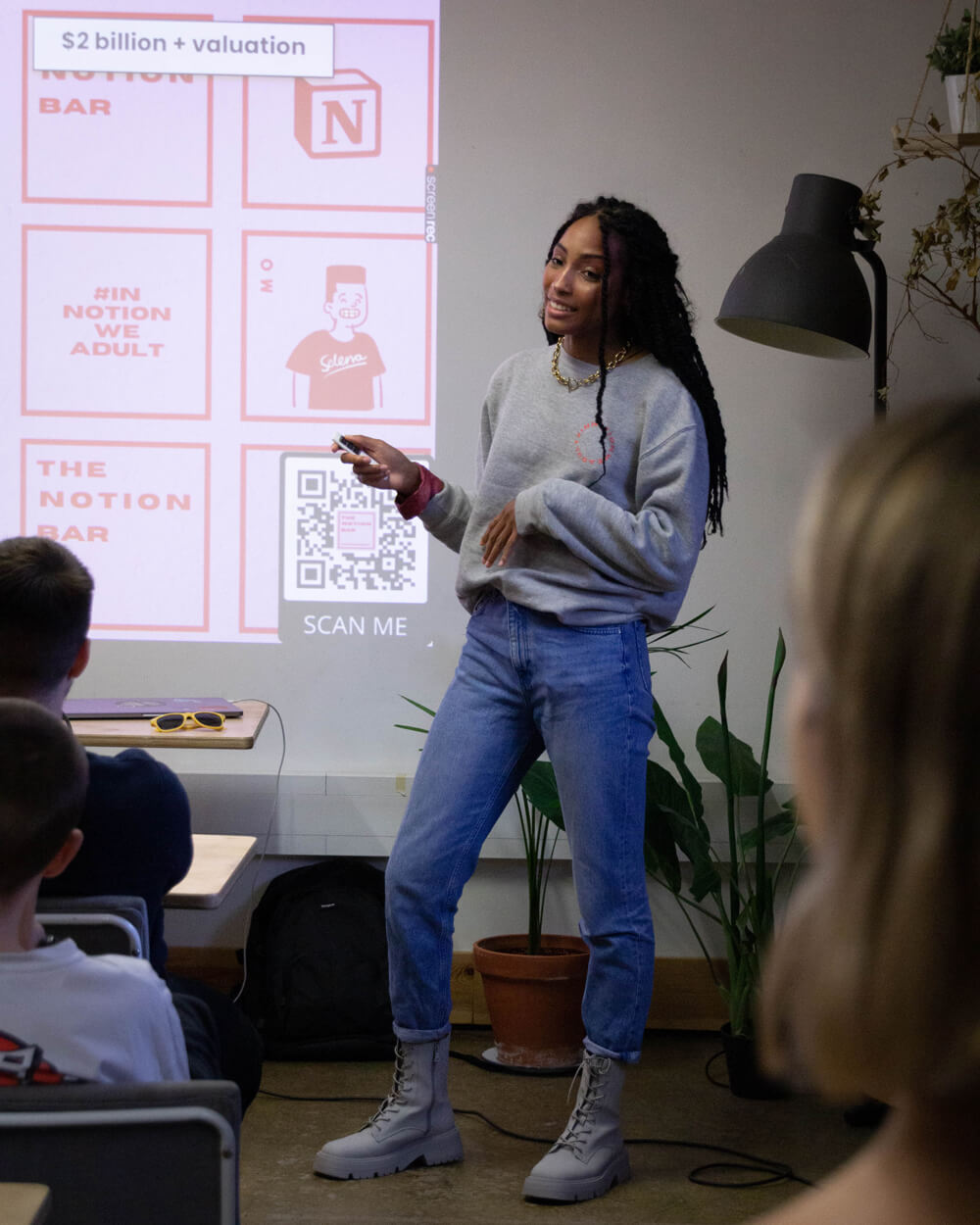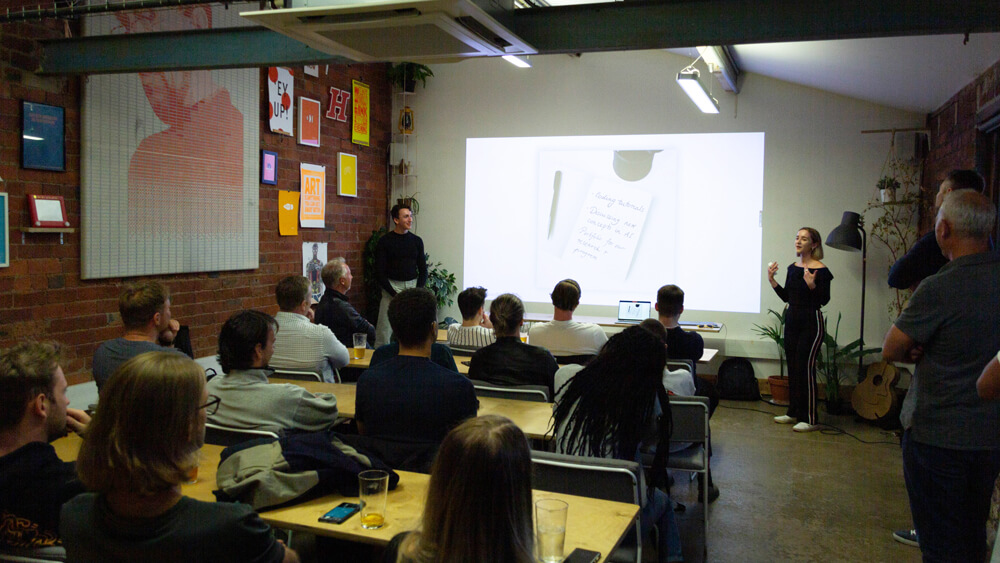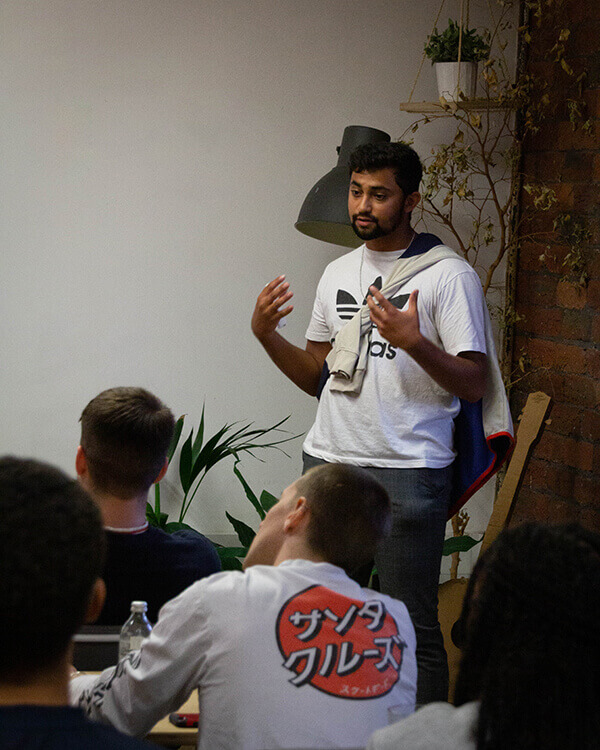Written by Sonia & Ash • Published 25th October 2021

Leeds Digital Drinks was back for the Leeds Digital Festival bringing you another one of our themed events: WTF Is No-Code and how does it change the game for creators?
Back in March 2020 we took a pause from our regular in person events and instead moved our community to a cosy space called Leeds Digital Makers. We would meet regularly and support each other to build side projects - many of which required almost no code written to create and launch.
We hosted WTF is No-Code during the Leeds Digital Festival at Duke Studios to share our lessons learned in our no-code deep dive over the past 18 months and hear from these thriving digital makers in our community how it empowers the new generation of creators online - no technical skills required!
Currently less than 1% of the global population can code, however the demand for tech and digital skills has never been higher - what can the other 99% use to build products?
The answer is no-code tools.
They form a set of visual building blocks that help you build anything with minimal or no coding experience. These blocks range from web development apps to chatbots to drag and drop builders that can help you bring your next idea to life without needing to hire a developer. Even better, no-code comes with an incredibly supportive and diverse online community with makers from all kinds of backgrounds all over the world who are eager to share knowledge and grow together.
No-code helps to build MVPs quickly as ideas come to mind with little to no cost. Growing companies built using no-code tools such as Qoints, Scribly or Remi are proof that these tools can form the foundations for any good idea to be developed further and their ease of use only makes the deployment quicker.
Key takeaway: Try no-code tools to build an idea you’ve had hiding away in your brain. You might be surprised by how easy it is. We created a
FREE tool directory on the Leeds Digital Drinks website if you want to discover some tools for yourself.
Who said building startups couldn’t be fun?
The sponsors of the evening, Bad Unicorn, a product studio launching bad business ideas recently celebrated their first birthday with a eye-popping 24 products launched in 12 months.
Ash met his co-founder Whit who is based in Atlanta, GA through a no-code mastermind group called Zero To One Makers. Together they started a newsletter called Bad Unicorn to launch absurd startup ideas and inspire other founders to build out their ideas using no-code and free tools online.
One start-up idea that grew in popularity was ElonStocks.com which was born quickly after the r\WallStreetBets boom thanks to GameStop. They noticed that Elon Musk's tweets had a particular effect on the stock market. Surely people would love to get notified about this, right?
They created an SMS service that would ping you when Elon tweets about particular stocks. The MVP was built in two days with an £8 upfront investment using a few apps such as Airtable, Zapier and Twilio.
Ash reviewed their launch strategy and how the website was picked up on Twitter, then rose to #2 on Product Hunt and eventually was shared to thousands of followers on TikTok All proof that with no code you can have an MVP in two days that is adaptable to scaling and even bringing in recurring monthly revenue.
Key takeaway: Using no-code allowed Ash & Whit to come up with ideas and make them come to life on a regular basis throughout the year. Besides having fun, it can generate some impressive passive income. Sign up to their free (and wild) newsletter at
BadUnicorn.vc

Frances is a certified Notion consultant who joined the no-code community during the pandemic and made it her full-time career soon after. She is the founder of the Notion Bar where she acts as a solutions builder, coach, consultant and a digital product builder. She tried out Notion as a tool to manage her workflow during the pandemic and fell in love with the community. You could almost call her the Marie Kondo of workflows and now helps her own clients achieve zen (and some positive vibes) with her Notion super powers.
But why would you use Notion? Instead of using multiple tools you can streamline your tech stack by switching to this magical app. It allows for easy collaboration with others, leads to less tool switching and can be accessed from anywhere. It has plenty of embeddings so it can be tailored to all of your needs ranging from project management, sharing portfolios and even building digital products. Find frances at @thenotionbar for more information.
Key takeaway: The no-code community is one worth bragging about. Frances came for the tool but stayed for the community and was able to make her passion a full-time job and has clients all over the world.

Sonia and Joe are two Data Science nerds that think a custom interactive map in python is the natural solution to vacation planning. But even with this odd love for coded interfaces they can’t code a website if their life depended on it. And so when it was time to start a blog about data science they turned to no-code solutions as the building blocks. No-code allowed them to get over that initial hurdle and make something whilst the idea is fresh in your mind.
We can often get caught up being a perfectionist when starting a side-project. Normally, if you want to make something yourself you are faced with a steep learning curve coupled with a want for the design to reflect your brand.
These are all tasks that need solving and together they can halt the process of your main focus. Sonia and Joe shared their journey of how no-code allowed them to find time for their research and studies while also being able to create a blog and a few automations on a student budget.
Key takeaway: Whether or not you are an experienced coder, using resources can help you bring your idea to life faster and help you get over the sticking point of perfectionism. Sonia & Joe were able to quickly bring their blog
accessedmemory.com. If you are interested in AI concepts explained with everyday examples give it a browse.

Shyamo is a multidisciplinary designer and creative entrepreneur currently studying his final year of Graphic Design at the University of Huddersfield. He also runs his own agency which is evolving as he develops his own art style. One of the driving ideas for his creativity was taking elements from different art he admired online and using it as inspiration for his own work.
Over the course of the last year, he found that the most creative parts were those moments in between projects where you have little sparkes of ideas. Harnessing them by writing them down in an organised manner was what allowed him to take his creativity to the next level. No code is a huge part of his practice, because it mainly concerns visual development which benefits from being intuitive rather than technical.
To create his portfolio he used Behance + Adobe Portfolio and his website was done in 45 minutes. Another free tool he uses frequently for his work is Blender, which is a great way to start out designing in 3D.
Key takeaway: As a creative Shyamo benefits from no-code when organising his
portfolio and trying out new styles, the tools are more visual and intuitive than technical allowing him to explore ideas faster.

Shaun is a digital designer working with Webflow on a daily basis. Whilst Webflow is one of the more versatile and adaptive no-code solutions to web building, Shaun decided to learn some code anyway. Why? To improve the connection between designers and developers. When collaborating, knowing code allowed him to ask for specific things in a language people understand whilst knowing the limitations developers face – so he went on to learn some HTML and CSS.
HTML helps understand how pages are semantically constructed & read by search engines whilst CSS is the element that adds style to the HTML document. Together they helped him make the most of Webflow. But why use Webflow over building something from scratch? It is super easy for clients as it is very visual, you can pretty much build anything and animate as well. It does come with drawbacks, which are that often it's difficult to get people to switch over from older platforms and can have some GDPR limitations as it’s not stored on EU servers.
Key takeaway: Visual development helps you better communicate with your clients AND dev team, getting everyone closer to the design, build and end result of the product.

Following perfectly from the previous presentation Josh Fry wowed the audience with a showcase of the variety of things you can design in Webflow and how quick it is to create templates for clients that they can see and approve or change.
It’s a very visual builder and therefore very helpful in allowing for the communication between designer and client. You can create games, responsive objects in websites and much more and with new Webflow features being released regularly. It’s no wonder it’s one of the choice no-code tools for modern agencies. Check out Josh’s showcase on the official Webflow website here.
Key Takeaway: Webflow is the website builder that can do it all from portfolios to full web apps and even games (?!). Josh also is heavily involved with the massive global Webflow community and is the founder of the
Leeds Webflow Chapter.
A massive thank you again to all our speakers for their time and for sharing their stories during the Leeds Digital Festival!
Your friendly neighbourhood meet-up,
Leeds Digital Drinks 🍺